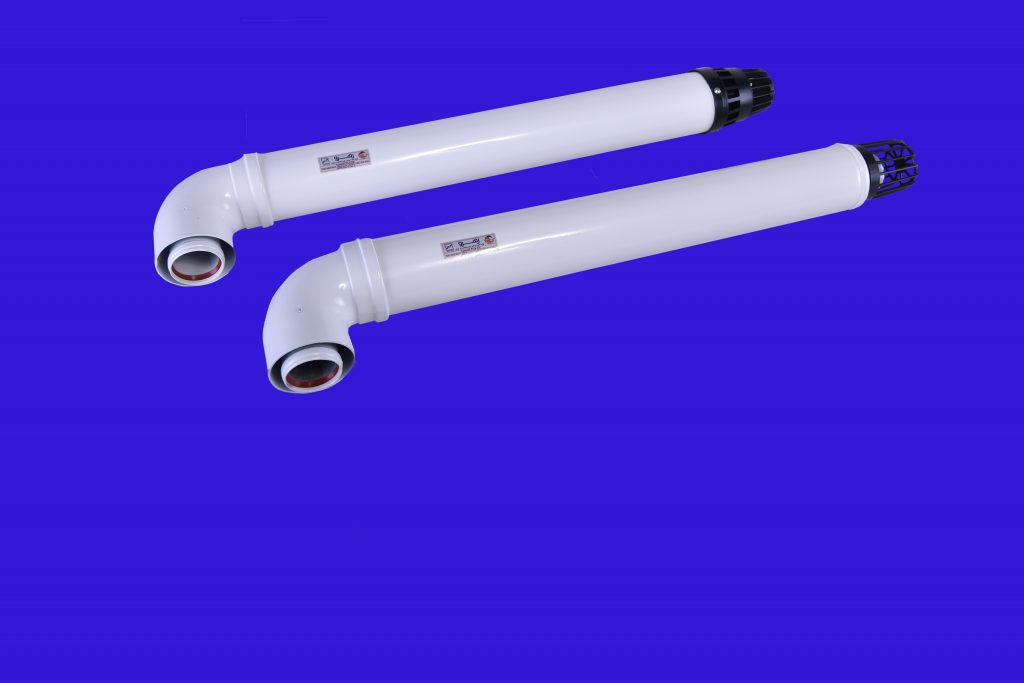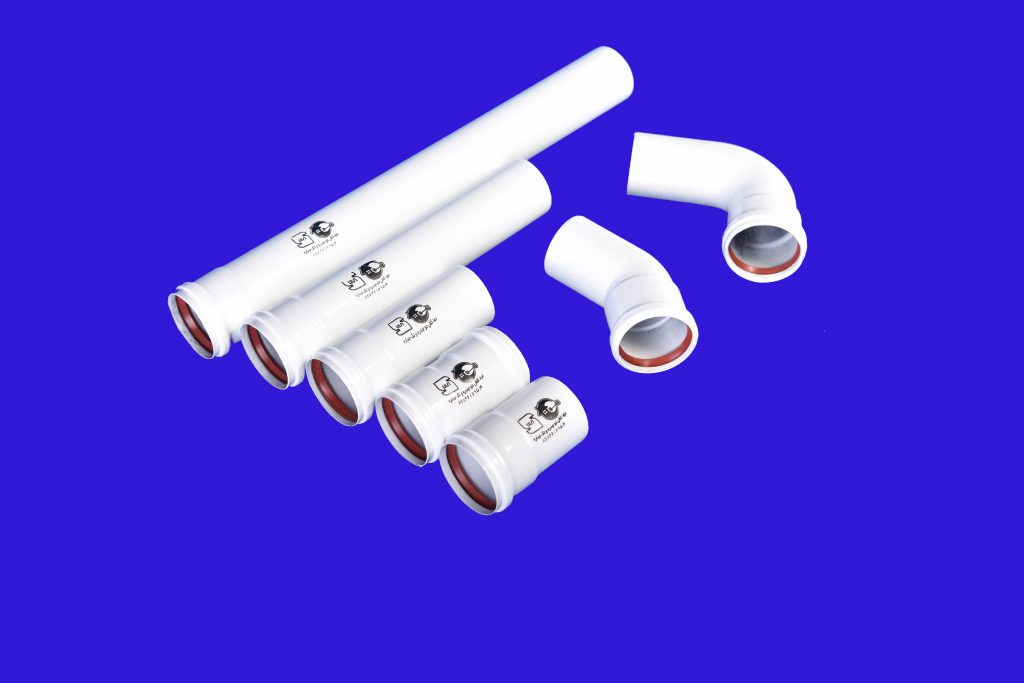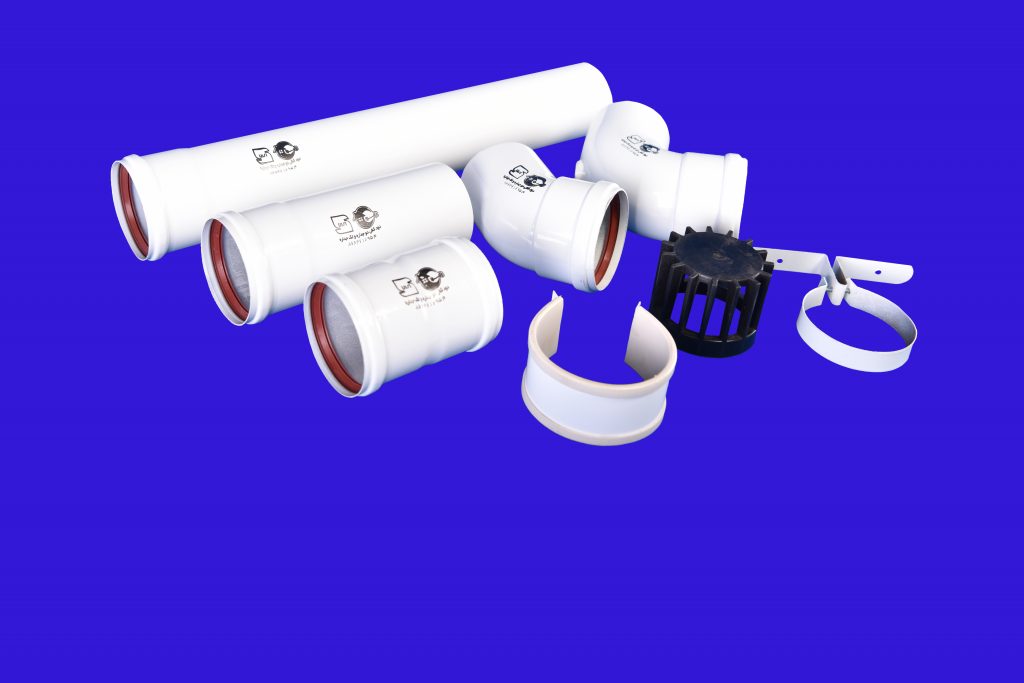دودکش های دوجداره کواکسیال (Coaxial) افقی آلومینیومی و تک جداره استاندارد
مقدمه ای بر تقسيم بندي دستگاه هاي گازسوز با توجه به نوع محفظه احتراق و دودكش:
2-1-1) نوع Aدستگاه بدون دودكش : هواي احتراق از محل نصب تامين و محصولات احتراق در همان محل تخليه مي شود. مثل اجاق گاز
2-1-2) نوع Bدستگاه با محفظه احتراق باز: هواي احتراق را از محل نصب تامين و محصولات احتراق در خارج از محل نصب تخليه مي شود. مثل بخاري,آبگرمكن,پكيج هاي معمولي و…
3-1-2) نوع Cدستگاه محفظه احتراق بسته (درزبند) : محفظه احتراق اين دستگاه ها كاملاً درزبند بوده و از محيط محل نصب جدا شده است.هواي احتراق را از خارج محل نصب تامين مي كند و محصولات احتراق را در خارج از محل نصب تخليه مي نمايد
تعریف دودكش های تک جداره و دو جداره هم محور کواکسیال (Coaxial):
شرح دودکش تک جداره :
دودکش تک جداره یعنی اینکه یک مسیر جهت خروج محصولات احتراق و دود دارد. تمام دودکش هایی که تابحال بر روی آبگرمکن و بخاری دیده اید از نوع تک جداره می باشد
شرح دودکش های دوجداره هم محور کواکسیال (Coaxial):
- برای تعریف دودکش دوجداره ابتدا بهتر است اندکی در خصوص سیستم عملکرد پکیج و خروجی دود و محصولات احتراق توضیح دهیم.
- پکیج های شوفاژ دیواری جهت گرمایش خانه و آبگرم مصرفی گاز را می سوزانند. طبیعتا دود حاصله باید به نوعی به خارج از ساختمان هدایت شود. وسیله ای که دود را به خارج از ساختمان هدایت میکند دودکش نام دارد.
- دودکش دو جداره به نوعی از دودکش گفته میشود که از جدار داخلی دود ناشی از احتراق پکیج خارج می گردد و از جدار بیرونی توسط فن هوای مورد نیاز احتراق پکیج از بیرون تامین می گردد.
- پکیج های گرمایشی طوری ساخته میشوند که بتوان با اتصال دودکش دوجداره بجای اینکه اکسیژن اتاق را مصرف کند مستقیما هوا را از خارج از ساختمان به داخل کشیده, احتراق را انجام دهد و محصولات احتراق را توسط همان دودکش به خارج هدایت کند.خاصیت استفاده از این سیستم این است که در فضاهای کوچک که قانوناً شما مجاز به نصب پکیج نیستید توسط این سیستم میتوانید مشکل خود را حل کنید. ضمن اینکه دیگر اکسیژن اتاق مصرف نخواهد شد و همیشه شما هوای تازه در منزل خواهید داشت. این عملیات باعث می شود ایمنی به طور کامل برقرار شود.
- دودکش دوجداره علاوه بر مسیری برای خروج دود به بیرون مسیری نیز برای ورود هوا به داخل پکیج را دارد.
- نتیجه گیری اینکه استفاده از دودکش های دوجداره بشدت توصیه میشود زیرا علاوه بر تامین ایمنی ساکنین خانه در کیفیت هوای خانه نیز بسیار موثر است.
مزایای دودکش های هم محوردوجداره کواکسیال (Coaxial):
دودکش دوجداره با جنس آلومینیومی به عنوان انتخابی ایده ال برای اجزای سیستم تخلیه به دلایل مهم زیر در نظر گرفته می شود:
۱) دوجداره بودن دودکش ،محصولات احتراق داخل آن را داغ نگه می دارد، در حالی که دیواره خارجی خنک است . بدین ترتیب مکشی قوی با حداقل تقطیر، ایجاد می شود.
۲) از آنجا که آلومینیوم جرم پایین و ضریب هدایت حرارتی بالایی دارد، دیواره داخلی به سرعت گرم شده و سطحی گرم را برای محصولات احتراق در دودکش فراهم می کند. تقطیر فقط روی دیواره های داخلی دودکش شکل می گیرد، که زمان تری و پتانسیل خوردگی را بیشتر از ۵۰% نسبت به فولاد گالوانیزه کاهش می دهد.
۳ ) دیواره داخلی آلومینیومی، در برابر خوردگی احتمالی ناشی از تقطیر مقاوم بوده و سیستمی ایمن و با عمر طولانی را ایجاد می کند
4) عدم نیاز به طول عمودی دودکش و همچنین امکان استفاده از دودکش با قطر و طول کمتر و سهولت و انعطاف پذیری در نصب
انواع دودکش ها
Horizontal twin-wall coaxial aluminum flues and standard single-wall flue
An introduction to the division of gas-burner devices according to the combustion chamber and flue type
1-1-2) Flue less device )Type A):
Combustion air is supplied from the installation location and the combustion products are discharged at the same location. Like a stove
2-1-2) Open combustion chamber device (Type B):
The combustion air is supplied from the installation location and the combustion products are discharged outside the installation location. Like heater, water heater, regular wall-mounted package etc.
3-1-2) Closed combustion chamber device (seal) (Type C):
The combustion chamber of these devices is completely sealed and separated from the installation location. It provides combustion air from outside the installation location and discharges the combustion products outside the installation location.
Definition of single-wall and twin-wall coaxial flues:
Description of the single-wall flue:
Single-wall flue means that there is one way for the products of combustion and smoke to escape. All flues you’ve ever seen until now on a water heater or heater are single-wall
Description of twin-wall coaxial flues
To define a twin-wall flue, it is better to explain first a little about the system of wall-mounted package operation and smoke output and combustion products.
Wall-mounted radiators burn gas for heating houses and consumable hot water. Naturally, the smoke must be directed outside of the building somehow. The device that directs smoke out of the building is called flue.
A twin-wall flue is a type of flue that the combustion smoke comes out from its inner wall and the required air for combustion is provided by a fan from outside from the outer wall.
Wall-mounted packages are designed in a way that can connect to a twin-wall flue instead of consuming room oxygen, brings in the air directly from outside of the building and do the combustion, and direct the combustion products out, of the same flue. The advantage of using this system is that in small spaces where you are not legally allowed to install the wall-mounted packages, you can solve your problem with this system. In addition, the room’s oxygen will no longer be consumed and you will always have fresh air at home. This operation ensures complete safety.
In addition to the smoke output, the twin-wall flue also has an entranceway for air to the wall-mounted package. As a result, the use of twin-wall flues is highly recommended, in addition to ensuring the safety of people inside the house, it is also very effective in the air quality of the house
Advantages of twin-wall coaxial flues
Twin-wall aluminum flue is considered as an ideal choice for discharge system components for the following important reasons:
The twin-wall flue keeps the internal combustion products hot, while the outer wall is cool. This creates a strong suction with minimal distillation.
Because aluminum has a low mass and high thermal conductivity, the interior wall heats up quickly and provides a warm surface for combustion products in the flue. Distillation occurs only on the inner walls of the flue, which reduces the time of corrosion potential by more than 50% compared to galvanized steel.
The aluminum inner wall is resistant to possible corrosion from distillation and creates a safe and long-lasting system.
No need for vertical length of the flue and also the possibility of using a flue with a smaller diameter and length and ease and flexibility in installation







